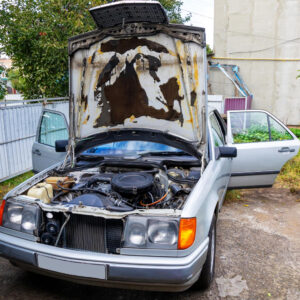Door actuators are integral to the functioning of modern automotive locking systems. They employ electric motors to convert electrical signals into mechanical motion, enabling the locking and unlocking of vehicle doors with ease. Holden ve door actuator is part of the central locking system, enhancing both security and user convenience. Actuators are designed to respond to signals from the car’s remote control or key fob, ensuring seamless access control. The technology embedded in these devices includes sensors and wiring that communicate with the vehicle’s electronic control unit (ECU).
Overview of Holden VE Commodore
The Holden VE Commodore, introduced in 2006, showcased significant advancements in automotive engineering. This model epitomised a blend of modern aesthetics and robust functionality, gaining acclaim for its comprehensive safety features and technological integration.
With a spacious interior and a sleek exterior design, it offered an appealing combination of comfort and style. The VE Commodore became renowned for its reliable performance, quickly establishing itself as a favourite among drivers and automotive enthusiasts.
It featured enhanced suspension systems and advanced electronic controls, contributing to a smoother and more responsive driving experience. Additionally, its fuel efficiency and robust engine options catered to a wide range of driving preferences, making it a versatile choice in the market.
Functionality of Door Lock Actuator
The door lock actuator plays a crucial role in the vehicle’s central locking system by transforming electrical signals into mechanical actions to lock and unlock the doors. Upon receiving a command from the vehicle’s remote control, the actuator engages its motor to move the lock mechanism into the desired position.
This process ensures that doors are securely locked or unlocked with minimal effort from the user. Integral to the vehicle’s security framework, the actuator works in concert with other electronic components to provide a reliable and responsive locking system.
Convenience of the Vehicle
The VE Commodore’s actuator is designed for durability and precision, contributing to the overall safety and convenience of the vehicle. Additionally, its integration with the electronic control unit (ECU) allows for efficient communication and operation within the car’s complex network of systems.
This seamless integration not only enhances the functionality of the central locking system but also contributes to the overall harmony of the vehicle’s electronic architecture. As a result, owners can experience an intuitive and reliable interface, ensuring peace of mind while on the road.
Troubleshooting Door Actuator Ve Commodore Problems
A faulty door actuator ve commodore can disrupt the central locking system, leading to inconvenience and security concerns. A systematic approach to diagnosing the issue can help pinpoint the problem.
Checking the Fuse Box
Start by inspecting the vehicle’s fuse box. Look for any blown fuses related to the central locking system, as these can prevent the actuator from functioning properly.
Testing the Battery
If the fuses are intact, proceed to test the car battery. A weak or failing battery may impact the actuator’s performance, reducing its ability to lock and unlock doors efficiently.
Listening for Unusual Noises
Pay attention to clicking or grinding sounds when operating the actuator. These noises often indicate mechanical issues, such as worn-out gears or motor failure within the actuator.
Examining Electrical Connections
Inspect the wiring and electrical connections leading to the actuator. Corrosion, loose wires, or damaged connectors can disrupt the electrical signal, affecting actuator functionality.
Conducting Manual Operation Tests
Try manually locking and unlocking the door to determine if the actuator responds properly. If the door functions correctly using the manual mechanism but not electronically, the issue likely lies within the actuator itself.
Seeking Professional Assistance
If the problem persists after these checks, consulting a qualified technician is advisable. Professional diagnostic tools can provide a more in-depth assessment, ensuring effective repairs and restoring reliable door actuator operation.
Common Issues with VE Commodore Door Actuators
VE Commodore door actuators can encounter a variety of problems due to wear and tear or electrical issues. Symptoms of a malfunctioning actuator include unusual sounds when attempting to lock or unlock the doors, erratic operation where the locks work intermittently, or a complete failure where the locks do not engage at all.
Another common issue is the actuator motor burning out, which can render the locking mechanism inoperative. Wiring problems such as loose connections or corroded wires can also contribute to actuator failure.
In some cases, the actuator may struggle due to mechanical obstructions within the door, such as debris or damaged components. Identifying the exact cause of the problem often requires a detailed inspection of both the electrical and mechanical systems within the door. Addressing these issues promptly is crucial to maintain the vehicle’s security and ease of use.
Visually Examine the Actuator
Utilising a multimeter can help in checking the electrical connections and confirming that the actuator is receiving the appropriate voltage.
- Pay attention to any signs of corrosion or loose wires, as these can disrupt the flow of electricity.
- For a more detailed inspection, it may be necessary to remove the door panel and visually examine the actuator and its associated components.
- Look for any physical obstructions or damaged parts that could be hindering the actuator’s operation.
- Lubricating moving parts within the actuator can sometimes resolve minor mechanical issues, while more complex problems might require disassembly or replacement of specific components.
- It is also advisable to consult the vehicle’s service manual for specific diagnostic procedures and recommended solutions.
Repair and Replacement Options
Opting for repair or replacement of a malfunctioning VE -Commodore door lock actuator is contingent upon the specific nature and severity of the issue at hand. Minor electrical faults may be rectified through straightforward interventions, such as rewiring or replacing a faulty motor. In instances of substantial mechanical damage, a complete replacement is often the most viable solution.
The replacement process begins with the careful removal of the door panel to access the actuator. Once exposed, the old actuator is disconnected, ensuring that all wiring and mechanical linkages are carefully detached to prevent damage. A new actuator is then installed, with particular attention paid to securing all connections and aligning the unit correctly within the door structure.
Vehicle’s Central Locking System
Replacing a door actuator requires careful attention to detail. Ensuring proper installation helps restore functionality and enhances the longevity of the vehicle’s central locking system.
Following Manufacturer Guidelines
Mechanics adhere to manufacturer instructions when installing new components. These guidelines provide the correct procedures to avoid errors and ensure optimal performance.
The Complexity of the Installation Process
The process of replacing a door actuator involves handling electrical connections, securing internal mechanisms, and ensuring compatibility with the vehicle’s locking system. Due to this complexity, precision is crucial.
Benefits of Professional Assistance
Seeking help from an experienced technician ensures that the replacement is done correctly. Professionals have the necessary tools and expertise to troubleshoot potential issues efficiently.
Long-Term Reliability
A properly installed actuator improves the durability of the central locking system. It prevents recurrent failures, reduces wear on related components, and ensures smooth operation over time.
Ensuring Full Functionality
After installation, testing the door actuator for proper operation is essential. Verifying that all doors lock and unlock seamlessly ensures that the central locking system is functioning as intended.
Cost Considerations
The expense associated with replacing a VE door actuator encompasses both the cost of the replacement parts and the labour charges. varying according to the brand and quality of the actuator. Higher-end brands typically command a premium due to enhanced durability and performance.
These costs can fluctuate based on the expertise of the mechanic and the complexity of the replacement process. For instance, a more experienced technician may command a higher fee, but their efficiency could reduce the overall time required for the job, potentially balancing out the cost.
Auxiliary Repairs Or Adjustments
The condition of the vehicle and the accessibility of the actuator can also impact labour expenses. Vehicles with easier-to-access components might incur lower labour costs compared to those requiring extensive disassembly to reach the actuator. Additionally, any auxiliary repairs or adjustments needed during the replacement process can further influence the total expenditure.
It’s prudent to obtain multiple quotes from reputable mechanics to ensure competitive pricing and quality service. Factoring in the warranty offered on both parts and labour can also provide peace of mind and protect against future issues. By thoroughly considering these elements, vehicle owners can make informed decisions regarding the repair or replacement of their VE door actuator.
Maintenance Tips for VE Commodore Door Lock Actuator
Regular maintenance is key to extending the life of a VE Commodore door lock actuator. Conducting routine inspections can help identify early signs of wear or electrical faults before they escalate. Ensuring the car battery remains in good condition is essential, as a weak battery can adversely affect the actuator’s performance.
To prevent mechanical issues, avoid using excessive force when locking or unlocking the doors, as this can cause undue stress on the actuator components. Periodically cleaning and lubricating the actuator’s moving parts can minimise friction and wear, contributing to smoother operation.
Enhances The Actuator’s Longevity
It’s advisable to keep the actuator and its surrounding areas free from debris, which can obstruct the mechanism and lead to malfunction. Checking the electrical connections for signs of corrosion or looseness can also aid in maintaining optimal performance. Regular maintenance not only enhances the actuator’s longevity but also ensures the overall reliability of the vehicle’s central locking system.
Employing these practices can help maintain the functionality and efficiency of the VE -Commodore door lock actuator over time. maintain the optimal functionality of their Holden VE- Commodore door lock actuator, thus safeguarding the vehicle’s security and ease of use.
Conclusion
The Holden VE door actuator stands as a crucial element in ensuring the effective operation of the vehicle’s central locking system. Recognising the potential issues, such as electrical faults or mechanical obstructions, allows for prompt diagnosis and intervention, mitigating the risk of extended malfunction. Implementing regular maintenance routines, including inspections and proper lubrication, can significantly enhance the longevity and performance of the actuator. When faced with more severe issues, understanding the cost considerations and opting for professional assistance can facilitate a seamless repair or replacement process. By addressing any arising problems and adhering to preventive measures, vehicle owners can
FAQs
1. Why does my VE Commodore’s door lock actuator stop working intermittently?
Intermittent locking issues can be caused by worn-out internal components, electrical faults, or damaged wiring. Over time, actuators may weaken, leading to sporadic functionality. Checking the fuse box and wiring connections can help pinpoint the problem before replacing the actuator.
2. What are signs that my door lock actuator needs replacement?
If your locks fail to engage or disengage properly, make clicking or buzzing noises, or stop responding to the key fob or central locking system, the actuator may be failing. Another common issue is only one door failing to lock, which suggests actuator wear in that specific door.
3. How can I prolong the life of my Holden ve door actuator?
To extend the Holden ve door actuator lifespan, avoid excessive force on door handles, ensure regular lubrication of locking mechanisms, and check for water damage or corrosion inside the door panel. If you experience frequent failures, replacing the actuator with a high-quality OEM or aftermarket part can prevent ongoing issues.
| Related Business Listings |
| Contact Directory |
| Local Business Profiles |







